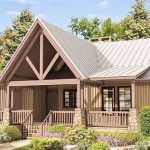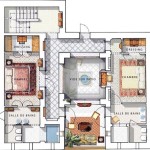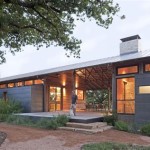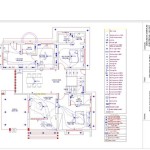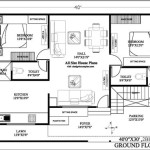Floor Plans For Tiny Houses On Wheels: Maximizing Space and Functionality
Tiny houses on wheels (THOWs) represent a significant shift towards minimalist living and sustainable practices. These mobile dwellings offer a unique blend of affordability, flexibility, and environmental consciousness, attracting individuals seeking an alternative to traditional housing. A critical aspect of designing a successful THOW is the floor plan, a blueprint that dictates the layout, functionality, and overall livability of the compact space. Thoughtful planning is paramount to ensure that every square inch is utilized efficiently and effectively.
Creating a floor plan for a THOW involves carefully considering the occupant's needs, lifestyle, and the limitations imposed by the trailer's dimensions. Unlike conventional homes, THOWs require a pragmatic approach to design, prioritizing essential features and incorporating multi-functional elements to maximize space. The design process necessitates a clear understanding of building codes, weight restrictions, and the principles of sustainable living.
Understanding Trailer Dimensions and Weight Restrictions
The foundation of any THOW is its trailer. The trailer's size and weight capacity significantly influence the design and build process. Standard THOW trailers typically range from 16 to 32 feet in length and 8.5 feet in width. The height is generally limited to 13.5 feet to comply with legal road regulations. Within these dimensions, the floor plan must be carefully crafted to accommodate living spaces, storage solutions, and essential utilities.
Weight restrictions are equally crucial. Trailers have a Gross Vehicle Weight Rating (GVWR), which specifies the maximum permissible weight, including the trailer itself, the house structure, all fixtures, appliances, and personal belongings. Exceeding the GVWR can compromise safety and potentially lead to legal penalties. Therefore, designers must meticulously calculate the weight of all materials and components before finalizing the floor plan. Choosing lightweight materials such as cedar siding, aluminum roofing, and strategically employing space-saving construction techniques are essential strategies for staying within weight limits.
Consideration should also be given to the placement of heavy items within the THOW. Distributing weight evenly across the trailer's axles improves stability and reduces stress on the structure. Heavier appliances and storage units should ideally be positioned closer to the axles rather than at the front or rear ends. This careful weight distribution contributes to a safer and more comfortable towing experience.
Key Elements of a Functional Tiny House Floor Plan
A well-designed THOW floor plan prioritizes functionality and adaptability. The goal is to create a comfortable and efficient living space within a confined area. Several key elements contribute to a successful floor plan, including the layout of living areas, the integration of storage solutions, kitchen design, bathroom considerations, and loft configurations.
Living areas should be designed to maximize natural light and airflow. Large windows and strategically placed skylights can create an illusion of spaciousness and contribute to a more welcoming atmosphere. Multi-functional furniture, such as sofa beds and folding tables, can transform the living area into a guest room or dining space as needed. Open-concept designs that seamlessly integrate the living area with the kitchen can also enhance the feeling of openness.
Storage is a critical consideration in THOWs. Built-in storage solutions, such as drawers under the bed, shelving integrated into walls, and overhead cabinets, are essential for maximizing space. Vertical storage is particularly effective, utilizing the height of the walls to accommodate a greater volume of belongings. Thinking creatively about storage spaces, such as integrating storage into stairs leading to the loft, can significantly enhance the overall functionality of the design.
The kitchen, though compact, must be functional and efficient. A well-designed kitchen should include adequate counter space, a sink, a cooktop or stove, and a refrigerator. Compact appliances, such as apartment-sized refrigerators and induction cooktops, are ideal for THOWs. Incorporating pull-out drawers and shelves within cabinets can maximize storage space and improve accessibility. The kitchen layout should allow for easy movement and efficient food preparation.
Bathroom design in THOWs presents unique challenges. Space is limited, and water conservation is paramount. Composting toilets are a popular choice, as they eliminate the need for a traditional septic system and conserve water. Compact showers or wet baths, where the entire bathroom is designed to get wet, can save space. Wall-mounted sinks and vanities can also contribute to a more open and less cluttered feel.
Lofts are a common feature in THOWs, providing additional sleeping or storage space. Ladders or stairs leading to the loft must be carefully considered. Stairs provide safer and more comfortable access but take up more space than ladders. If stairs are used, integrating storage into the stair structure can further maximize functionality. The loft design should also consider headroom and ventilation to ensure a comfortable sleeping environment.
Designing for Sustainability and Energy Efficiency
Sustainability is often a driving factor for individuals choosing the tiny house lifestyle. Incorporating sustainable design principles into the floor plan can significantly reduce the environmental impact of the THOW and contribute to lower operating costs. This involves selecting environmentally friendly materials, maximizing energy efficiency, and implementing water conservation strategies.
Choosing sustainable building materials is crucial. Reclaimed wood, bamboo flooring, and recycled denim insulation are all viable options that reduce the demand for new resources. These materials often have lower embodied energy, meaning less energy was required to produce them. Opting for locally sourced materials can also reduce transportation costs and support local economies.
Maximizing energy efficiency involves careful consideration of insulation, windows, and appliances. Properly insulating the walls, roof, and floor of the THOW can significantly reduce heating and cooling needs. High-performance windows with low-E coatings can minimize heat transfer, further improving energy efficiency. Energy Star-rated appliances should be selected to minimize energy consumption.
Passive solar design can also contribute to energy efficiency. Orienting the THOW to maximize solar gain in the winter and minimize it in the summer can reduce reliance on heating and cooling systems. Overhangs and awnings can shade windows during the summer months, while strategically placed windows can capture solar heat in the winter. Proper ventilation is also essential for maintaining a comfortable indoor environment and preventing moisture buildup.
Water conservation is another key aspect of sustainable THOW design. Low-flow faucets and showerheads can significantly reduce water consumption. Installing a rainwater harvesting system can provide water for non-potable uses, such as watering plants or flushing toilets. Implementing a greywater recycling system, which reuses water from sinks and showers for irrigation, can further reduce water consumption.
Ultimately, the floor plan of a tiny house on wheels must be a reflection of the individual's needs and priorities, carefully balancing space, functionality, and sustainability. A well-designed THOW can provide a comfortable and fulfilling living experience while minimizing environmental impact and promoting a simpler, more intentional lifestyle.

Tiny House Floor Plans 32 Home On Wheels Design

Escape Traveler A Tiny House On Wheels That Comfortably Sleeps 6 Floor Plans Trailer

224 Sq Ft Tiny House On Wheels By Living Homes Small Diy

Tiny House Plans The Project

27 Adorable Free Tiny House Floor Plans Craft Mart

Tiny House Plans On Wheels Main Floor Bedroom Office Lofts

Free Tumbleweed Diy Tiny House Plans Houses

Tiny House Floor Plans 32 Long Home On Wheels Design

Escape Traveler A Tiny House On Wheels That Comfortably Sleeps 6

How To Pick The Best Tiny House On Wheels Floor Plan Wayward Home

